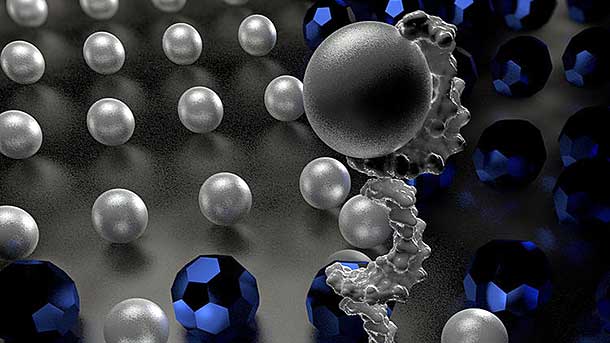A lot of science fiction novels and movies have featured the use of Nano technology to shrink down people and machines. They are also sent inside human bodies to actively interfere with a threat to the health of the person they are inside of. Today, that idea is a little bit closer to reality. There has been a recent advancement with nanotechnology. Scientists at Caltech were able to programmed robots that are made of DNA.
It’s not a nano vessel where shrunken people can board yet, but this significant advancement has a lot of positive implications on the future of biotechnology.
In an article by the online publication of Science magazine, scientists at the California Institute of Technology has designed a nano robot made from DNA that has a functional body composed of hands, arms, and feet.
In their experiments, the researchers were able to create these DNA robots that can perform a preprogramed set of tasks. The robots ‘walked’ and ‘carried’ around molecules to a defined location. Although this might not seem to be a lot at first glance, this is definitely a step into the right direction.
The California-based research team of scientists headed by Anupama Thubagere and Lulu Qian both leading bioengineers at Caltech were the ones who spearheaded this advancement. The potential application for this new capability to control DNA Robots is endless and they have yet to tap its full power.

What are the potential applications?
This development could be applied on how medicine is administered. Nano robots could directly neutralize a disease at the molecular level. In theory this will skyrocket the effectiveness of drugs being able to directly treat a sickness at it roots. A concrete example would be Nano robots being able to search and reach cancer cells accurately, which is still not entirely possible by the current medical technology available. With this new development they can program the robot to be able to set up molecular factories that manufacture medicine as needed.
What are the robots made of?
If you view the body at the Nano-level, you will see a whole new alien world that is teaming with life. A living body is composed of a system of interconnected living cells. There are thousands of naturally occurring nanomachines that are responsible for moving cargo in and out these cells, such as the Kinesin and Dynein.
The robots that were recently made are composed of nucleotides and the whole machines are only 20 nanometers in length each. A single robot has simple but functional parts, which includes an arm, a hand, foots, and a leg. Its walk is more like a crawl due to the natural structure of DNA – which is essentially what the robot is made of.
How does it move?
The secret of the movement of this particular nanobot lies within the nature of the behavior of the four bases of DNA, which are adenine, guanine, thymine, and cytosine. The adenine on a particular DNA can attach to the thymine of another DNA strand, while the cytosine of one DNA strand can connect to the guanine of another.
Sorry, the comment form is closed at this time.